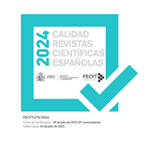Developing Language Operative Capacity in a Subsidiary of a German MNC in China
Resumen
One of the key challenges of language management in multinational companies is developing corporate language capacities to fulfil business goals. Yet the notion of corporate language capacity remains to be explored and developed in research. To address this gap, this study aims to conceptualise corporate language operative capacity and investigate how it is developed at a German multinational corporation that specialises in providing business software. Participants in this study were six staff members at different levels, namely two vice presidents and four senior managers from different departments. Data were collected through in-depth interviews and document analysis. Qualitative analyses indicated senior management’s conceptualisation of languages as a sophisticated, dynamic and multi-functioning system in support of the company’s global strategy. Developing corporate language operative capacity requires the acquisition, deployment and development of language resources derived from interactions among human capital, social-cultural capital and technological capital. Analyses of the data also identified middle-level management’s role in designing and implementing language-related activities to support the corporate goal of developing corporate language operative capacity
Descargas
Descarga artículo
Licencia
La revista Círculo de Lingüística Aplicada a la Comunicación, para fomentar el intercambio global del conocimiento, facilita el acceso sin restricciones a sus contenidos desde el momento de su publicación en la presente edición electrónica, y por eso es una revista de acceso abierto. Los originales publicados en esta revista son propiedad de la Universidad Complutense de Madrid y es obligatorio citar su procedencia en cualquier reproducción total o parcial. Todos los contenidos se distribuyen bajo una licencia de uso y distribución Creative Commons Reconocimiento 4.0 (CC BY 4.0). Esta circunstancia ha de hacerse constar expresamente de esta forma cuando sea necesario. Puede consultar la versión informativa y el texto legal de la licencia.











